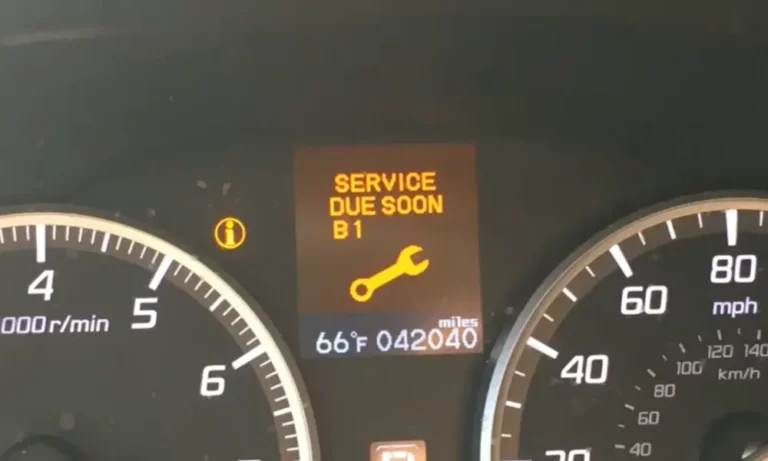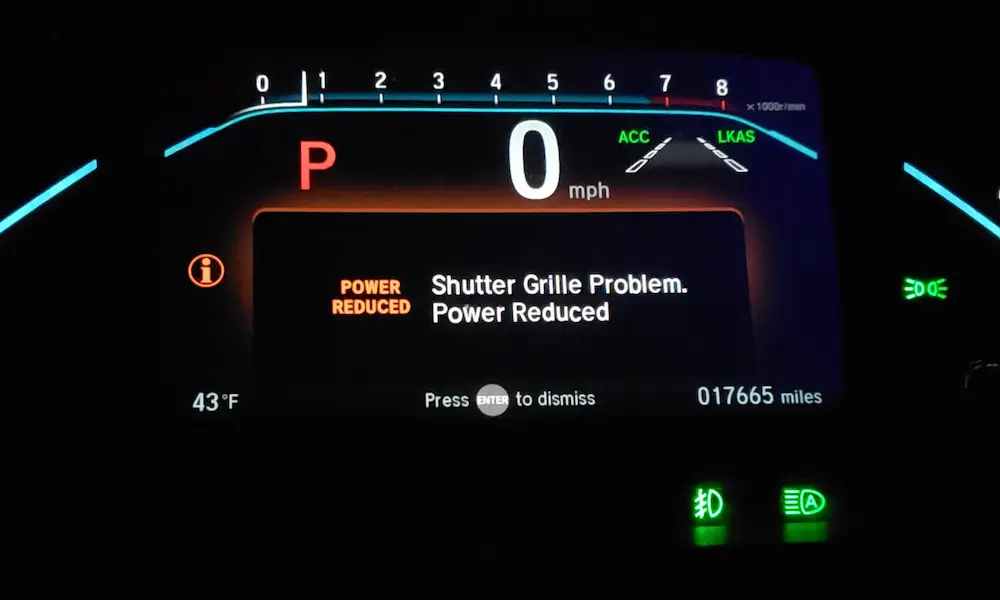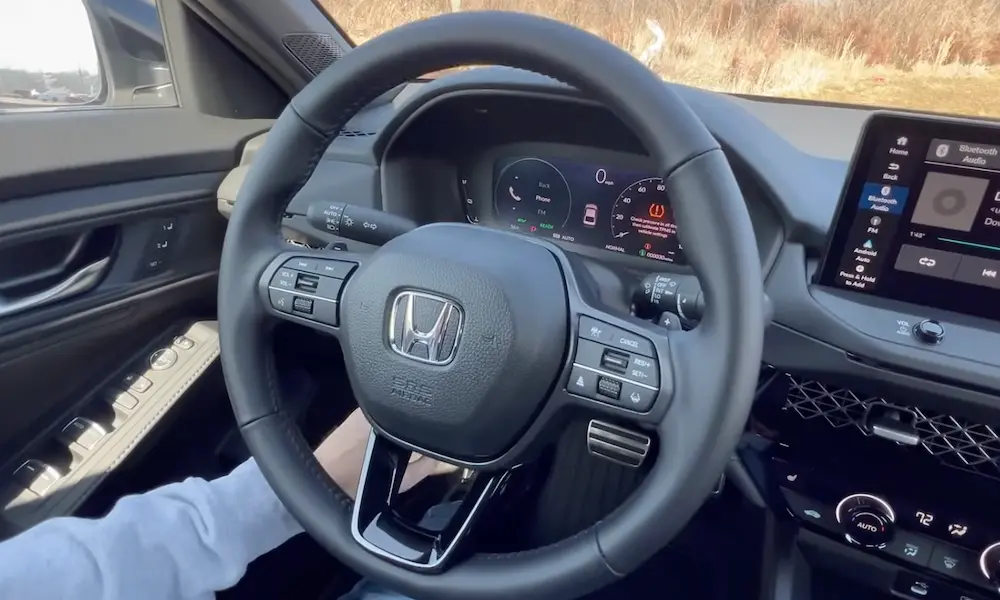Seeing “Service Due Soon B1” on your Honda’s dashboard can seem confusing, but it’s just a helpful reminder from the Honda Maintenance Minder. This alert means your car needs an oil change, a mechanical inspection, and a tire rotation.
Staying on top of these services is key for keeping your vehicle running smoothly. Curious about how this routine maintenance can save you from costly repairs? Keep reading to find out more!
Understanding the B1 Service Code
The “B1 Service Due Soon” message on your Honda is an important reminder that keeps your vehicle in top shape. This message signals specific maintenance tasks, which are crucial for vehicle health and performance. Paying attention to this code helps ensure your car runs smoothly and safely.
Significance of B1 Service Message
When you see the B1 message on your dashboard, it’s not just about changing the oil. The “B” indicates you need an oil and filter change along with a mechanical inspection. The “1” means a tire rotation is necessary.
Following these steps helps prevent larger, costlier issues in the future. Regular maintenance with these services also improves fuel efficiency and extends your vehicle’s lifespan. Many Honda models, such as the Accord and Civic, use this code to simplify understanding maintenance needs.
Decoding the Maintenance Minder System
The Honda Maintenance Minder System is a smart feature. It monitors your car’s mileage, engine conditions, and driving habits. Then, it tells you when maintenance is needed, just like when the “Service Due Soon B1” message pops up.
Generally, the system suggests servicing every 5,000 to 7,000 miles or six months, whichever comes first. The system helps you keep track without needing to check the odometer constantly. It’s a great way to stay proactive about car maintenance without stressing over calculations. By following these alerts, you keep your car healthy and minimize unexpected breakdowns.
Components of B1 Service
B1 Service for your Honda is essential for maintaining the car’s performance and safety. It includes vital procedures like changing the engine oil and oil filter, rotating and checking the tires, inspecting the brakes, and examining fluid levels. Each task is designed to keep your vehicle running smoothly and to catch potential problems early.
Engine Oil and Oil Filter Change
Changing the engine oil and oil filter is crucial for keeping your engine healthy. Oil change helps reduce friction and wear on engine parts, ensuring smooth performance. A clean oil filter removes contaminants, preventing them from damaging the engine. Regular oil changes protect the engine and extend its life, making them an integral part of B1 Service.
Tire Rotation and Inspection
Tire rotation helps ensure even wear, which extends the life of your tires. During a tire inspection, technicians check for damage and ensure proper alignment. This process balances the tread wear, improving grip and fuel efficiency. Uneven wear can affect handling and safety, so regular tire rotations are important to keep your ride smooth and safe.
Brake Inspection
A thorough brake inspection checks the pads, rotors, and fluid. Effective brakes are crucial for safety, so technicians look for wear and tear on the brake pads and any signs of damage on the rotors. Keeping an eye on the fluid levels ensures the brakes function properly. Catching issues early is key to maintaining safe stopping power.
Fluid Level Checks
Technicians check all essential fluid levels, including transmission fluid. Keeping these levels within the recommended range ensures the engine, brakes, and transmission function efficiently. Proper fluid levels help prevent overheating and ensure smooth gear shifts. Regular checks help avoid costly repairs and keep the vehicle running optimally.
Mechanical Inspection
During the mechanical inspection, various components get a close look to ensure everything operates efficiently. Technicians may focus on items such as belts, hoses, and the maintenance schedule. This thorough checkup helps identify potential issues early, preventing them from becoming major problems and ensuring your vehicle lasts longer.
Additional Inspections and Adjustments
Taking care of your Honda involves more than just regular oil changes. It’s important to ensure that several other components are running smoothly. This section dives into the importance of the parking brake adjustment, the vehicle stability assist check, and the exhaust system inspection.
Parking Brake Adjustment
The parking brake is crucial for your car’s safety, especially on steep inclines. Over time, the brake can loosen. You should check and adjust it regularly to make sure it holds properly.
Adjusting the parking brake involves tightening the cable that connects to the rear brakes. This ensures it engages fully when you pull the lever or press the pedal. If the brake feels weak or doesn’t hold the car, it’s time for an adjustment. Proper adjustment can prevent your car from rolling unexpectedly, keeping it secure.
Vehicle Stability Assist Check
Vehicle Stability Assist (VSA) helps keep your car stable on slippery roads. This system uses sensors to adjust braking and power delivery, so your car stays on its intended path during sudden turns or slick conditions.
Checking the VSA system involves ensuring all sensors are functional and calibrated correctly. Any warning indicators or irregular sensations in handling might signal a problem. Regular inspections help maintain the system’s reliability and prevent accidents.
Exhaust System Inspection
Your car’s exhaust system is responsible for directing harmful gases away from the engine and reducing emissions. Over time, this system can develop leaks or become clogged due to rust or debris.
An exhaust system inspection checks for holes, damage, or blockages in the pipes and muffler. It’s essential to make sure the system runs quietly and efficiently.
Pay attention to louder exhaust noises or a decrease in fuel efficiency, as these could indicate issues that need fixing. Regular inspections help in reducing emissions and improving engine performance.
Difference Between A1 and B1 Service
When your car’s maintenance light comes on, it might be time for A1 or B1 service. These services are important for keeping your vehicle in top shape.
A1 Service involves basic maintenance tasks like an oil change and a tire rotation. You might see the A1 message pop up frequently, especially if you drive often.
B1 Service goes a bit further. It includes everything in A1, plus a more detailed mechanical inspection. For example, you’ll want to check various components and replace parts if necessary.
In a Honda A1 Service, you focus mostly on the essentials, similar to the general A1 service. It’s a quick way to ensure your car’s daily functions are running smoothly.
B1 Service offers more extensive checks and part replacements. You might need this if there are warnings on your dashboard or if your car feels off.
Here’s a simple table to highlight the differences:
| Service Type | Tasks Included |
|---|---|
| A1 Service | Oil change, tire rotation |
| B1 Service | A1 tasks + comprehensive inspection |
If you drive a lot, managing both A1 and B1 services can help you catch potential issues early. This keeps your car reliable and safe for all your travels.
Check your car’s manual or consult with your service center to know exactly what each service includes for your specific car model.
Benefits of Regular Maintenance
Regular maintenance offers several important benefits for your vehicle. It not only helps extend the lifespan of your car but also ensures safety and improves fuel efficiency. Staying consistent with upkeep can prevent costly repairs and keep your car running smoothly.
Extending Vehicle Life
Routine maintenance is key to keeping your car in good condition over the years. By regularly checking and updating parts, you prevent major system breakdowns. Things like oil changes, tire rotations, and brake inspections can add years to your vehicle’s lifespan.
Following the maintenance schedule helps keep your car’s engine and other crucial parts functioning well. This not only saves you money but also might be required to meet your warranty terms. Consistent care today means fewer unexpected problems tomorrow.
Ensuring Safety
Safety is a top priority when it comes to driving. Regular checks help catch potential issues early, like worn-out brakes or tire problems. Addressing these fixes before they escalate ensures that you and your passengers are safer on the road.
Regular vehicle maintenance reduces the risk of accidents caused by mechanical failures. Stay alert to dashboard alerts like the “service due soon b1” message and don’t ignore them. Keeping your car in top shape protects you and everyone else on the road.
Optimizing Fuel Economy
Keeping up with maintenance tasks can improve your car’s fuel economy. Small things like checking tire pressure and replacing air filters make a big impact on how efficiently your car uses fuel. When your car runs efficiently, you spend less time and money at the gas station.
Maintaining engine performance through regular servicing helps your car use fuel more efficiently, reducing your carbon footprint. Simple, regular upkeep leads to savings and better environmental choices.














